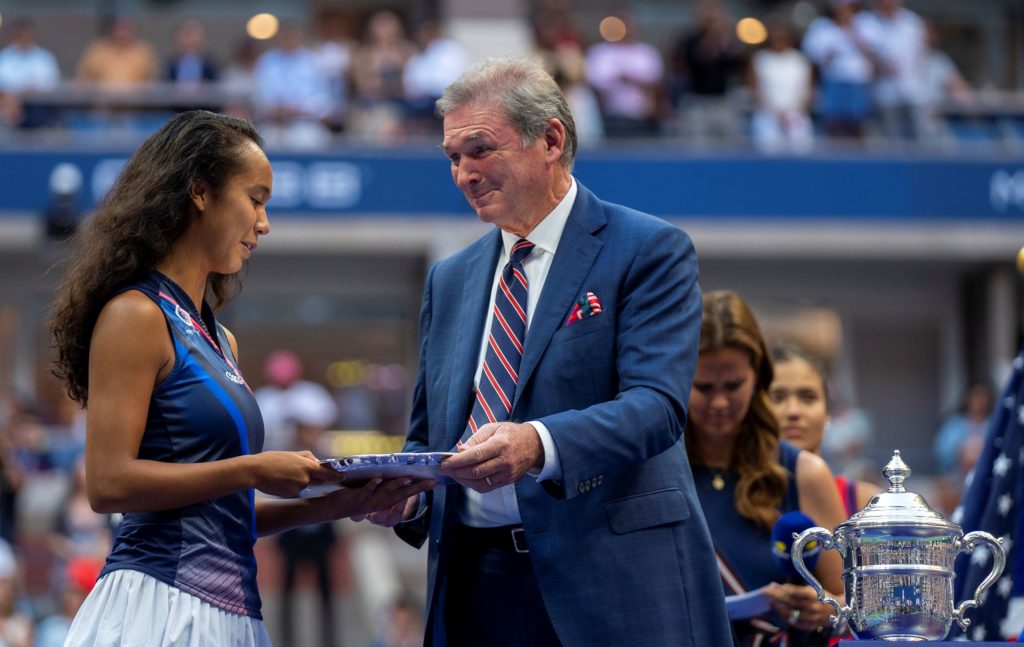
By their mid-20s most people have matured enough to understand the emotional intensity of life for teenagers like Leylah Fernandez, 19, and Emma Raducanu, 18, – not to mention the pressure they would feel with the sporting world focused on them playing in an event like Saturday’s US Open final.
At an age when so many things are first-time and take on outsized importance without the perspective of time and more life experiences, it’s easy to understand how all-consuming their championship match would have been.
Neither Fernandez or Raducanu probably never considered the possibility of losing Saturday in Arthur Ashe Stadium.
Both had charmed paths to the final – Raducanu all the way from the obscurity of the qualifying event to the pinnacle of a Grand Slam championship match. And Fernandez after overcoming four elite WTA players, including three from the top-five – Aryna Sabalenka, Naomi Osaka and Elina Svitolina – as well as three-time Grand Slam champion Angelique Kerber.
When Raducanu hit an ace to end the match and win the 2021 US Open final 6-4, 6-3, it was devastating for Fernandez, an indefatigable fighter who is known to take losses very hard. In one moment all the triumph and struggle of an extraordinary two weeks had come to a shattering stop.
“I am still disappointed,” Fernandez said in the media interview room shortly after the match. “I think this loss – I’m going to carry it for a very long time. It will motivate me to do better in training, better for the next opportunity I get.”

Fernandez wasn’t asked about how she felt when the match began, even though there were signs she was experiencing the tension associated with such a big occasion. In the second game, after averaging exactly three double faults per match in her previous six rounds, she double-faulted twice and Raducanu broke serve for a 2-0 lead that she would never relinquish except for a brief moment early in the second set.
For Raducanu, her smooth ride through her three qualifying and six main-draw matches (18 sets won – zero lost) carried over seamlessly into the final.
“This morning I was feeling a lot of weird feelings,” she said on court after her victory. “It was like I don’t really know what it was – just like something was just a bit strange. But then I just accepted that it’s natural playing a Grand Slam final. I was just trying not to think of the occasion as much as possible. When I got out there onto Ashe, having already played three matches on it, I honestly felt, I almost felt at home, which is kind of weird to say. From the first point I just thought ‘business as usual’ and I didn’t feel like there were any additional nerves during the match.”
Business in the first three games was highly competitive and lasted a hard-fought 22 minutes with Raducanu leading 2-1 on serve. The first set wound up being decided in the tenth game with Fernandez serving at 4-5. Raducanu finally converting her fourth set/break point with a well-struck forehand down-the-line winner.
Both young women had shown their ability to hit big, often wrong-footing their opponent, and with wicked angles. The stat revealing who had the better of the first set was the number of break points and their conversion rate – Raducanu 2/10 and Fernandez 1/4.
The main regret for Fernandez in the opening set would be subpar serving – just 50 per cent of first serves made, leading to only 43 per cent of second-serve points won.
At the start of the second set, Fernandez did well to pull out of love-40 on her serve in the second game to level at 1-1. She broke serve to 2-1, her only lead of the match, but was immediately broken back. When Raducanu held to 3-2, broke to 4-2 and held to 5-2, Fernandez’s chances were fading. She managed to save two championship points serving at 2-5 before Raducanu, saving a break point, served out in the following game, finishing the one-hour and fifty-one-minute match on her third championship point with her second ace.
“The match point, I don’t think I made one serve that wide in the whole match, to be honest,” Raducanu said about her final strike of the ball. “I was like, ‘if I’m going to make it, this is going to be the time (smiling).’ I literally drove my legs up to that ball toss like never before. Yeah, I landed it.”
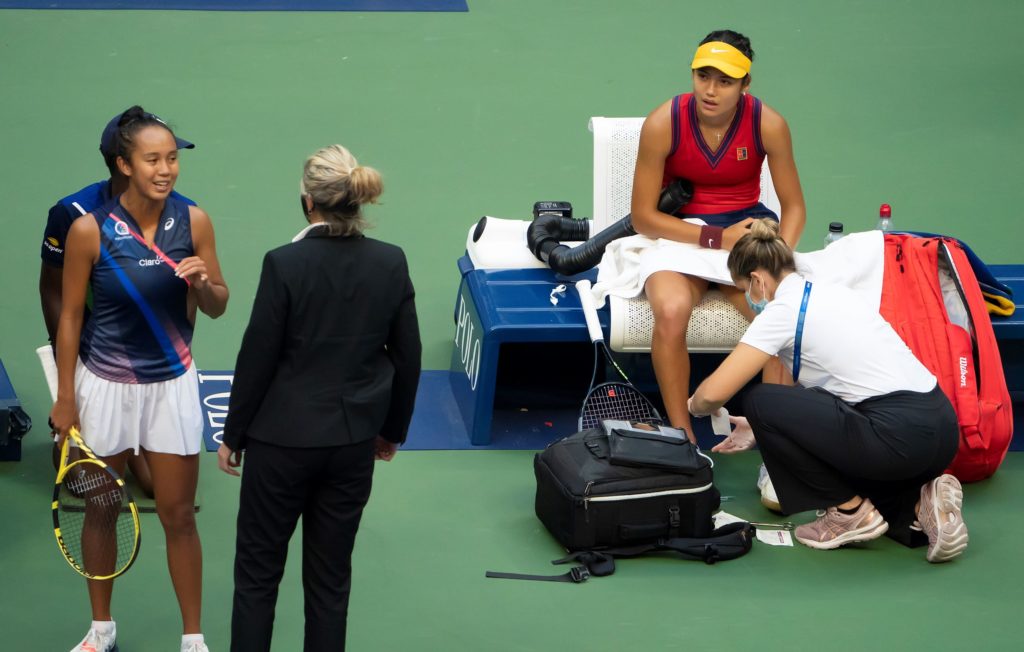
There was controversy in the final game when Raducanu slipped and skinned her left leg below the knee on the court, requiring a medical time-out to stop the bleeding and bandage the cut. The game score was 30-40, a break point for Fernandez.
“I honestly did not know what was happening with Emma,” Fernandez explained about her discussion with tournament official Claire Wood while Raducanu received treatment. “I didn’t know how serious her fall was, so that’s why I went to see the official and ask her about it. It just happened in the heat of the moment. It was just too bad that it happened in that specific moment with me with the momentum. But it’s sports, it’s tennis. Just got to move on.”
Despite concern she would lose her rhythm after the five-minute interruption, Raducanu saved the break point when Fernandez misfired long with a forehand.

The bottom line on the match was that in a confrontation of similar styles – “Both of us were playing fearless tennis the whole two to three weeks,” Raducanu said – she hit harder, with better placement and more consistency than Fernandez. The effects of all the time spent on court during her previous matches – 12-hours and 45-minutes to seven-hours and 42-minutes for Raducanu – may finally have taken their toll on Fernandez.
And any advantage she may have expected to have as a left-hander was probably negated by the fact that Raducanu practices a lot with her coach Andrew Richardson, a southpaw.
“I’m still only 18 years old,” Raducanu summed up. “I’m just having a free swing at anything that comes my way. That’s how I faced every match here (seven weeks) in the States.”

During the trophy presentation ceremony, Fernandez, born a year before 9-11, endeared herself to the New York crowd on the 20th anniversary of that unforgettable horror when she asked for the microphone to make an additional comment. “I hope I can be as strong and as resilient as New York has been the past 20 years,” she said. “I love you, New York.”
“I looked at the date,” she later explained. “I remembered watching just movies about what happened, then asking my parents what exactly happened that day. I was just so in shock when they told me. They told me what they were doing when they saw the news.
“Obviously I don’t know much about what really happened, but with the information that I do have, I know that New York has suffered a lot the past years when it did happen. I just wanted to let them know that they’re so strong, they’re so resilient. They’re just incredible.”
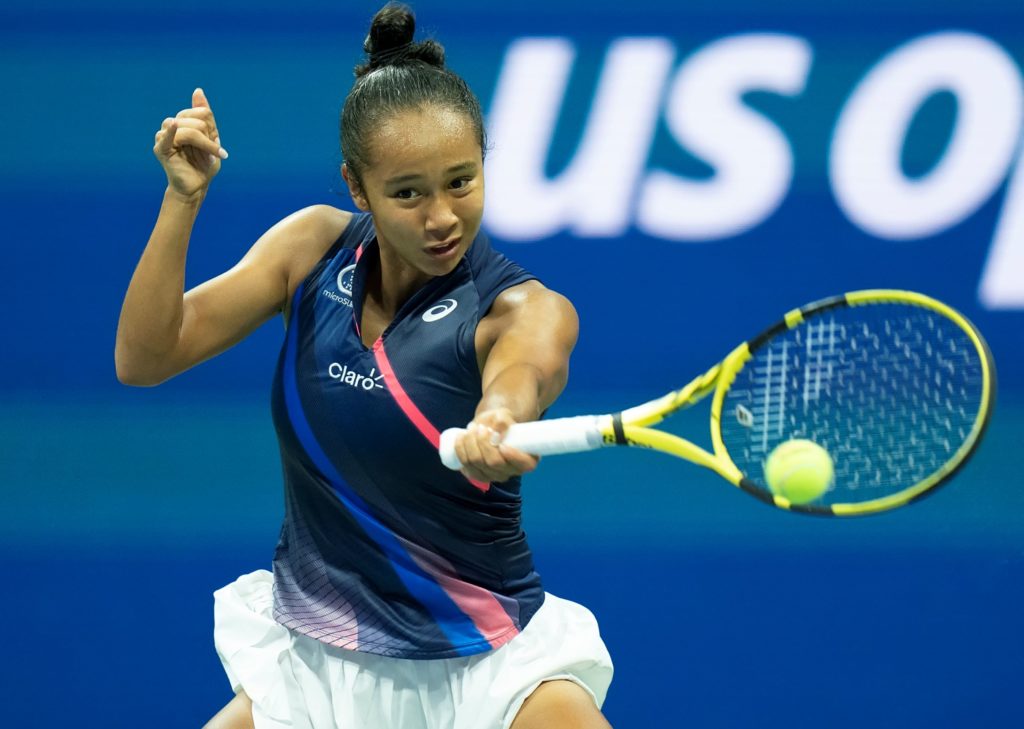
Fernandez’s run to the final has moved her ranking from No. 73 up to No. 28. And in the race to the year-end WTA Finals she rises from No. 62 to the top-20 – within striking distance of qualifying for the eight-player field.
Despite all the pre-match hype about two teenagers playing for the title, Fernandez and Raducanu both claimed it was not something they thought about as they honed in on the final and trying to win it. “It did never cross my mind,” Fernandez said, “I was just very excited to play a final. I unfortunately did not do well, and Emma did great. So that’s what happened.”
It did happen and Fernandez will take it to heart, and it will hurt for a while. But she is too fierce, committed and smart a competitor not to now appreciate that only one player can win – and that the next time it could be her.
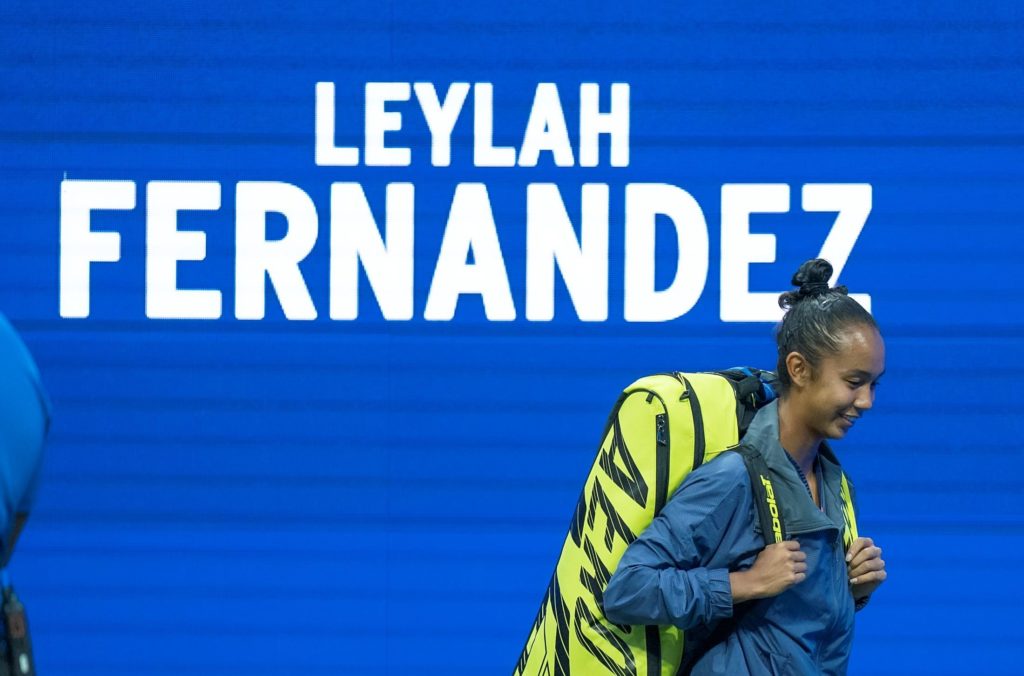
FROM THE ARCHIVES
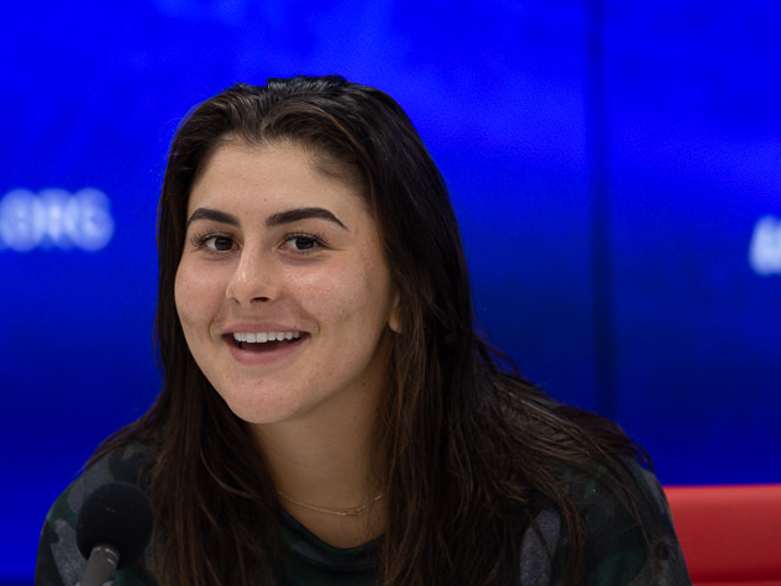
Here’s the happy face of the US Open champion from exactly two years ago.
Feature Photo: camerawork usa


